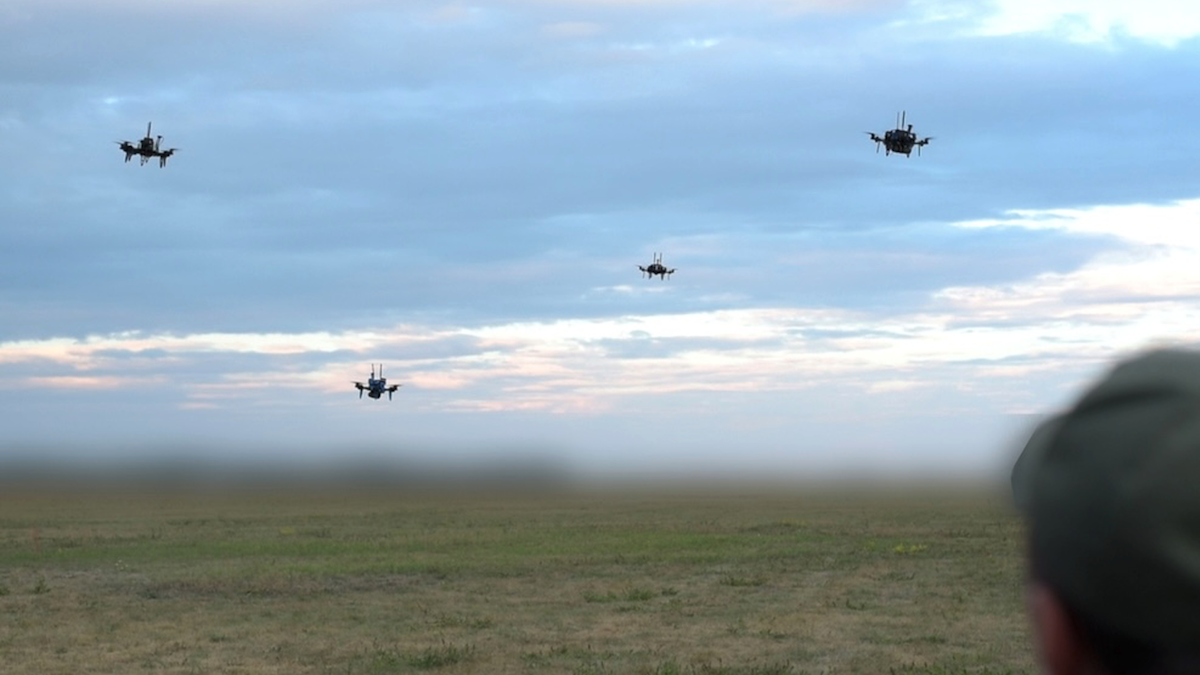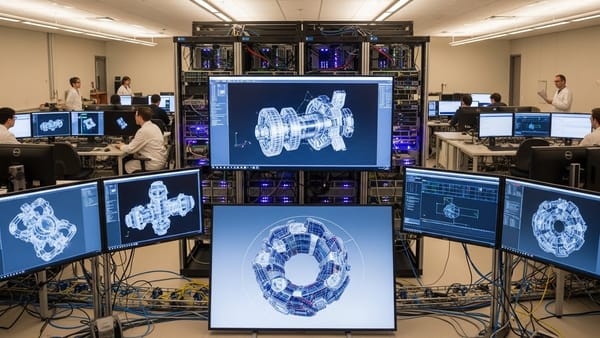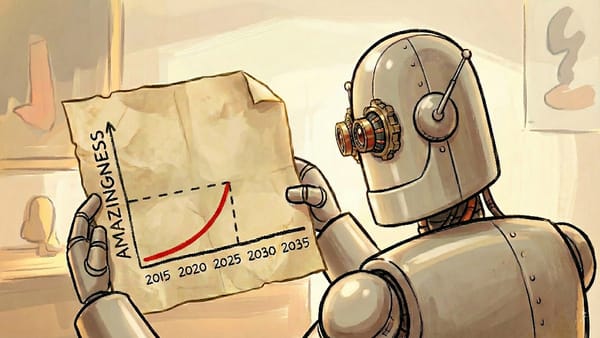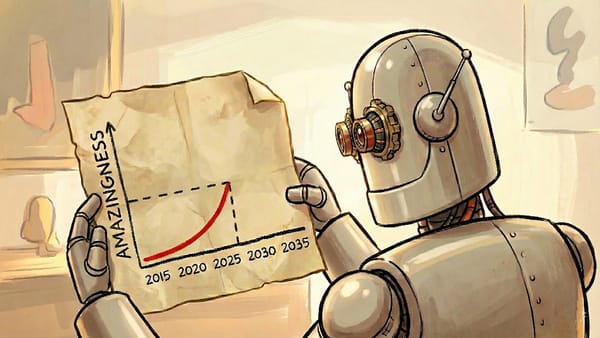Drone Swarms Go to War: Ukraine experiments with small groups of low-contact, high-autonomy drones that strike on initiative
Swarms of drones that coordinate with one another autonomously have become a battlefield staple in Ukraine.

Swarms of drones that coordinate with one another autonomously have become a battlefield staple in Ukraine.
What’s new: The Ukrainian army is deploying squads of weaponized drones that decide among themselves which will attack first and when. Small swarms controlled by software developed by Swarmer, a U.S.-based startup, have been targeting Russian soldiers, equipment, and infrastructure for the better part of a year, The Wall Street Journal reported.
How it works: Swarmer’s swarm-control software is designed to work with a wide variety of unmanned aerial vehicles. A human operator makes decisions about use of lethal force: “You set the target and they do the rest,” said a Ukrainian officer whose unit has used Swarmer’s technology more than 100 times. Unlike popular drone-driven light shows, in which a crowd of drones are pre-programmed to move in particular ways, Swarmer swarms adapt to one another’s motions. And unlike typical drones, which depend on cloud computing, they operate in ways that are designed to avoid enemy interference with communications. For instance, the human operator can transmit to the swarm only once per minute. The units maintain distance and avoid collisions with one another, but they navigate independently to avoid presenting an aggregate target.
- The system includes (i) an operating system that manages the security, integrity, and delivery of data that passes between drones and their human operators, (ii) an AI engine that manages swarm behavior, and (iii) a user interface for planning missions, defining targets, and authorizing use of force. It has no defensive capability and can’t take evasive action if fired upon.
- Swarmer is scaling up the number of drones its software can manage. The software is designed to manage up to 690 drones, and Swarmer is preparing for a test of 100. It has been tested successfully with up to 25. However, a typical deployment involves only 3: one for reconnaissance and two bombers that may carry as many as 25 small bombs each.
- The human crew includes an operator, a planner, and a navigator. The operator sets a target zone in which the swarm will seek enemy positions, issues commands to engage, and can abort missions. The operator orders strikes based on targets marked in video from the reconnaissance drone.
- The swarm determines when each bomber will act based on its distance from the target, remaining battery power, and available munitions. They continue to attack until they recognize that the target has been destroyed.
Behind the news: Drones are deployed en masse by both sides as Ukraine defends itself against invasion by Russia. They have changed the course of the war, as tactical and strategic goals have shifted to accommodate enormous fleets of unmanned air power, often in the form of consumer-grade equipment.
- Ukraine, especially, has embraced the technology to compensate for its smaller, less well armed forces. Hundreds of companies have sprung up to meet the rising demand.
- Drones are the leading cause of death for soldiers on both sides. They account for 70 percent to 80 percent of battlefield casualties, The New York Times reported.
- They also have many non-lethal uses. Drones monitor enemy forces; lay mines; and deliver food, water, medicine, and ammunition. Larger ones evacuate wounded and dead soldiers.
Why it matters: AI has a long history in warfare, and drone swarms are only the latest of what promises to be an ongoing stream of military uses of the technology. Yet the increasing autonomy of military drone systems poses difficult challenges, both practical and ethical. Swarmer’s software keeps humans in the loop to make firing decisions but, driven by the brutal logic of armed conflict, drones seem bound to become more widespread, capable, and autonomous.
We’re thinking: War is tragic. At the same time, democratic nations must have the means to defend themselves, and we support the Ukrainian people in their struggle to defend their country.




